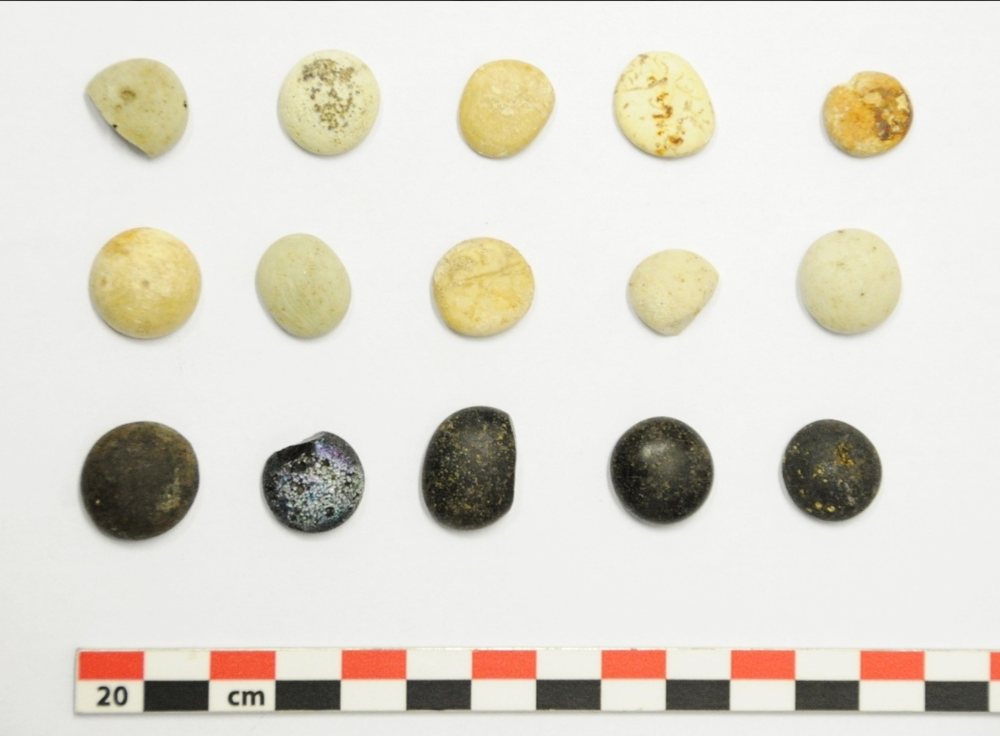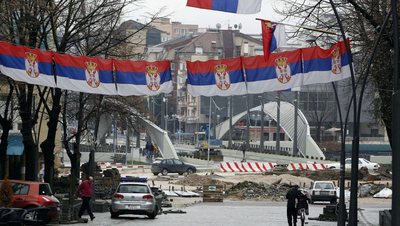
The study of games in antiquity has been treated very little in Albanian archaeology, where attention has focused mainly on structures such as amphitheaters and stadiums, while board games. Although present in archaeological finds from Durrës and other Illyrian cities, they remain little known and without documented names or rules.
The study of games in antiquity is one of the least studied aspects of Albanian archaeology. In the few cases where these issues are mentioned, it is usually about the presentation of architectural structures intended for the organization of games, such as amphitheaters or stadiums. Meanwhile, board games have remained almost completely out of the attention of researchers and, consequently, of the general public. The archaeological traces associated with these games are unknown, poorly preserved and rarely attract attention.
In this context, we will offer the reader some interesting data on objects related to board games, played in ancient Durrës, but also in other cities of Southern Illyria. First, we must clarify a major deficiency in this field: it is about the non-transmission of the names of these games from Illyrian, as well as the lack of information on the rules of the game. Consequently, while we have objects related to board games during antiquity and the Middle Ages, for the names and the way they were played we are forced to turn to the preserved texts of ancient Greek and Roman authors.
In the texts of ancient authors, occasional mentions of board games are found. These authors distinguish between gambling games and other recreational games. Gambling games, called alea, were morally condemned in antiquity. These games were mainly played using dice, as is also attested in ancient sources (Herodotus 1.63; Plutarch, Antonius; Suetonius, Caligula 71; Juvinal, 1.88-92; Martialis 15.15).
According to Plato (Phaidros 274D), who follows the Egyptian tradition, the god Thoth was the inventor of the dice game. While, according to Pausanias (10.31), the inventor was a Greek, Palamedes. Herodotus (1.94.1-7) states that the Lydians created the games in the time of King Atys. This opinion is contradicted by Athenaeus (Deipnosophistae 1.19a), who mentions the "heroic" origin of the games, long before King Atys of Lydia. These contradictions among ancient authors indicate that the origin of the games is early and that they spread throughout the Mediterranean, making it impossible to determine the exact creator of the rules of the game.
Preventive measures were also taken by the Roman Senate regarding gambling, which, however, seem not to have been rigorously enforced, as even the emperors themselves played (Suetonius, Augustus 71).
Meanwhile, fun games were treated by ancient authors with a different consideration. One of the earliest mentions of board games is found in Homer, when he describes Penelope playing with "stones" (Odyssey I, 107).
In the city of Durrës, the most interesting find is related to board games and was made in the 1960s. As an inventory of a grave, 15 game stones were found: 10 white and 5 black. They have a diameter ranging from 1.4 to 1.8 cm and a height of 0.4 to 0.8 cm. Glass paste, natural stone and bone were used for the white stones, while for the black stones only glass paste was used.
Stones made of glass paste are uniform in size and shape: flat on the bottom and curved on the top. Stones made of bone are also similar in size and treatment. Stones made of natural stone, on the other hand, are varied in shape and size, and are used in their natural state, without being processed.
A few similar objects have been found in the Albanian territory, mainly in some ancient settlements. Outside Albania, similar stones have been used during various historical periods, at least since the 4th century BC, and continued to be used during the period of the Roman Empire. In the case of the finds from Durrës, their dating mainly refers to the period between the 4th and 2nd centuries BC.
Another interesting find from Durrës is an ivory object, crafted in a round shape, with a diameter of 0.3 cm. The front side is carved in shallow relief, with side decorations. The central part has a decorative motif of three birds tied by their legs and hanging upside down.
The reverse is flat and unadorned, containing only two incised numerals, in Latin and Greek, representing the number 13. Similar examples have been found as grave offerings in several ancient Mediterranean sites and usually bear different numbers. It is thought that these tesserae were made primarily in Alexandria, Egypt.
In the Archaeological Museum of Durrës and in the archaeological funds, fragments of bricks and tiles carved with shallow lines are preserved that show a playing field, widely known among the people as the game of “nënteshi” or “yçit”. In one case, a fragment of an architectural element, carved in limestone, was also found. Such objects have been found within the city of Durrës, but also in its hinterland, such as in the village of Kryevidh. The object found in this village has a game on each side: on one side is the game of “nënteshi”, while on the other side a rectangular field appears with four boxes on each side, which are cut by several diagonal lines that create several rhombuses.
These objects date back to both the ancient and medieval periods. Similar finds have been documented in other settlements in Albania, such as Shurdhah and Kanina. In the Mediterranean region, carvings of this game are frequent and belong to different time periods. They are carved on bricks, tiles, marble slabs and floors of private and public buildings.
From these data it is clear that we are dealing with a game that has been in use for a long time in the Mediterranean. Even in Albania, these findings begin from antiquity and extend until the medieval period.
On the marble slabs of the city's Byzantine Macellum-Forum, a circular playing field with a diameter of 55 cm is carved, divided by four radial lines that create eight spaces. At the ends of the diagonal lines, where they touch the circle, eight arches are incised. A cross is carved above the arches, while in the spaces below the arches are letters of the Greek alphabet, which form the words: ΤΟΟ/ΝΟ/ΜΑ/+Κ/ωΝ/CΤ/ΑΝ/ΤΙ/Ν, which translate as "The Name of Constantine".
This playing field in the international literature is identified with the game known in Albania as the "trishe" game. This name is associated with a multitude of similar playing fields. Comparable findings, in terms of form and structure, have been documented in several European countries, with some changes in the details of the organization of the game scheme. Some of them are very similar to the fields used until recently in Albania, where the four radial lines are divided within a square. In other cases, the four lines are located within a circle, or are connected by semi-circles at the point where they meet the circle.
Circular playing field with a diameter of 55 cm, carved into the marble slabs of the Byzantine Forum in Durrës
Almost identical to this Durrës playing field is found on the marble slabs of the large northern hall of the Philippi market, which had previously functioned as the portico of a macellum. Here we find the same playing structure, with arches connecting the ends of the diagonals, the inscription of two words in the Greek alphabet and the use of the cross as a religious symbol. The letters used are also very similar, especially the letters «ω» and «Α». This playing field dates back to the 4th-6th centuries AD.
The variety of schemes for this game is such that it has been necessary to create a special typology. The Durrës field belongs to type C6 – “Circle with 8 spokes and 8 arcs”. Its dating is related to the construction of the monument where it was found, at the end of the 5th century – beginning of the 6th century AD.
On the marble slabs of the city's Byzantine Macellum-Forum, next to this field, two other circles, with a diameter of 45–50 cm, are carved. Here we are dealing with two unfinished playing fields, as the radial lines that usually form the complex scheme of the game are missing.
The use of two-colored stones, white and black, made of glass or not, is mentioned by several ancient authors. A passage in Pollux (Onomasticon 9.98) mentions the division of the playing stones into two opposing fields, according to their colors. A more detailed description is found in Calpurnius Siculus (or Pseudo-Calpurnius, Laus Pisonis, 195–205), who mentions playing stones made of glass, white or black.
In another passage, this time in Ovid (Tristia 2.472), we find again the mention of playing stones of different colors. The playing field and the stones with which it was played are also found in Martial (Epigr. 2.48.4; 18.16), however without a distinction between their colors.
The latest mention in time is in 463 AD, by Sidonius Apollinaris (Lettres à Trygetius, Ep., 8.12.5), where two-colored stones are again mentioned. However, there is different discussion among scholars about their use for a specific game.
According to some scholars, it is a game of war, taking into account the use of the term plinthion, which was a military term for units of troops on the battlefield. Apart from the fact that many game pieces are used and it was necessary to advance on the field to eliminate the opponent, its rules are not known in detail. Perhaps a Roman version of this game was also known as “trictrac”, as can be understood from two passages in Plato (Rep. 6.487B) and Polybius (Hist. 1.84).
According to other scholars, this game is identified with “pente grammai”, the game of five visas. However, based on the description of Pollux (Onomasticon 9.97), this possibility has been rejected, as the rules of the game seem to have been different.
Among the Roman games that used colored stones was latroncule, or ludus latrunculorum. The mentions by Latin authors are different, but the most extensive is that of Calpurnius Siculus (Laus Pisonis, 195–205). According to this description, the playing field was divided into a grid of 8×8 squares. Perhaps a field of this model may also have been depicted in some reliefs and, moreover, does not contain any dice. This is why the game is associated with the term latroncule, where the principle of the game is similar to the polis mentioned by Greek authors, and which aimed at eliminating the opponent's stones. The name is thought to come from the word latro, meaning soldier or mercenary.
The game stones in this case were called latrones and could be made of stone or glass, in different colors; some of them could also have relief decorations, as in the case of the 15 bone and ivory stones of the Scala Theater Museum in Milan (with engravings of numbers in Latin and Greek), or the 6 pieces of the Antiquarium Comunale in Rome.
Another favorite game of the Romans was the ludus duodecimscriptorum, for which there is no consensus on the field where it was played. Some authors believe that the game of 12 lines was different and had rules similar to “tric-trac” or “backgammon”, by analogy with our “checkers”. It is a field where three lines of 12 signs or letters were scratched, divided into two parts by a vertical partition. Often, instead of signs, meaningless letters or letters that formed complete words or sentences were placed.
Based on a famous epigram of Agathias, describing the game played by the emperor Zeno (9.482), several attempts have been made to understand more clearly the organization of the game and the board used. It is not clear whether this was the board described above or a different version, with two twelve-line squares, each with six divisions, resembling modern backgammon.
This game spread so much, and with betting, that in the Synod of Elvira in 305 AD, the game with betting was banned, while around 730 its practice was completely banned. What is of greatest importance is the use of two pairs of stones, white and black, like those found in Durrës.
There is evidence for the stones used in this game that on one side there were engraved numbers from I to XV, while the other side had decorations. This description is very similar to our object no. 2. The ancient name of the game of nine remains unclear; perhaps for the Greeks it was triodion, while for the Romans it is unknown. Its shape may have been square or circular, simple or decorated, with arches or circles. According to one researcher, the game of trishe, as practiced today, does not appear before the 17th century.
However, Ovid's description in two different texts – “… on the art of placing on a small board three pieces for playing, the winner being the one who has placed them all in the same row.” (Tristia 2.481; Ars Amatoria 3.365) – suggests that the rules of the game played in Albania were similar to those of antiquity.
While the circular playing field, divided by diagonal lines and arches, was played until the early 1990s in Albania, its rules were different from those of the “trishe” game. One player had three stones, while the opponent only one stone. Practically, the first player aimed to block the second player in a position without the possibility of movement.
As this summary shows, discussions about the games, rules, stones used, and playing fields still continue in several directions, often in contradiction to each other. Consequently, it remains difficult to determine with certainty whether the 15 two-colored stones were used for pente grammai, polis, latroncule, or all of them together. The stone with relief carvings was probably used for the game ludus duodecimscriptorum.
The game boards of tris, nines, and checkers help to understand more about the games that were played in the Albanian territory throughout antiquity and the Middle Ages. The time differences in their discovery indicate a significant chronological continuity, which is also confirmed by the use of these games to this day./BIRN






















